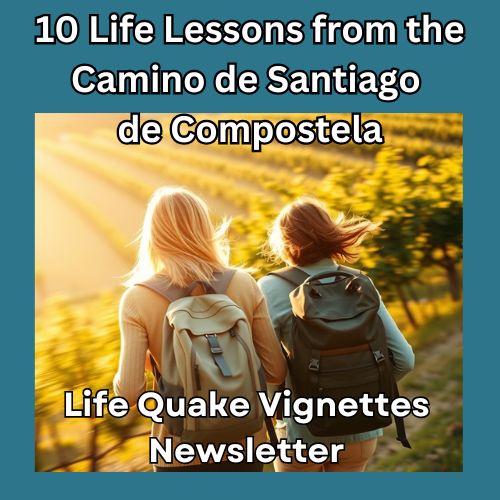Key Points:
- Vulnerability creates deeper connections and trust
- Society’s binary thinking about strength vs. softness limits our potential
- Embracing both creates a magnetic presence that others are drawn to
- This integration requires practice, self-awareness, and intentional courage
Opening Pandora’s box
Lately, I have been wondering about this. Is it possible to reveal our vulnerability without losing our influence?
If it is, does that mean that everything we’ve been told about power is wrong?
We live in a world that whispers a persistent lie: that to be powerful, you must be invincible. That vulnerability is a crack in your armour, a weakness your enemies will exploit. That showing your tender underbelly is career suicide, relationship cancer, the fast track to being overlooked and undervalued.
But what if the opposite were true? What if your greatest strength lies not in your ability to build walls, but in your courage to tear them down?
The Story of Celia Budd: When Walls Came Tumbling Down
The rain hammered against the floor-to-ceiling windows of the boardroom as Celia Budd sat at the head of the polished mahogany table, her reflection ghostlike in its glossy surface. The air tasted metallic with tension, thick enough to chew. Around her, twelve faces stared—some hopeful, others sceptical, all waiting.
At forty-three, Celia had built her reputation as the “Iron Lady” of tech startups. Her portfolio company exits had made her investors wealthy beyond their dreams. She wore her nickname like armour, her designer suits like battle gear. But today, something felt different. Today, the weight of that armour was crushing her.
“Before we discuss the quarterly projections,” she began, her voice steady as always, “I need to share something with you.”
The silence stretched like a held breath. The faint hum of the air conditioning seemed deafening. She could smell her own fear—sharp, acrid, mixing with the lingering coffee and leather scent of the room.
For three months, Celia had been battling panic attacks that struck without warning. They’d started small—a flutter in her chest during presentations, sweaty palms before investor calls. But they’d grown into monsters that left her gasping in bathroom stalls, gripping marble countertops until her knuckles turned white.
Two weeks ago, she’d collapsed in this very room during a merger discussion. The official story was exhaustion. The truth was that her body had finally rebelled against years of suppressing every emotion, every doubt, every moment of human frailty.
“I’ve been struggling,” she said, the words feeling foreign on her tongue. “With anxiety. With the pressure I’ve put on myself to be… perfect. Unbreakable.”
She watched faces around the table shift—eyebrows lifting slightly, bodies leaning forward. The taste of vulnerability was bitter and sweet simultaneously, like dark chocolate dissolving on her tongue.
“Last month, I had a panic attack during the Henderson presentation. I locked myself in my office afterwards and cried for an hour.” Her voice cracked slightly, and she didn’t try to steady it. “I realised I’ve been so afraid of appearing weak that I’ve become… brittle. And brittle things break.”
The youngest board member, Sarah Chen, leaned forward. “Celia, I—”
“Let me finish,” Celia said, raising a hand. But her gesture wasn’t commanding—it was requesting. “I’m sharing this because I believe we’ve created a culture where admitting struggle is seen as failure. Where being human is somehow unprofessional. And I think it’s killing our creativity, our connection, our ability to truly lead.”
She stood, walking to the window. The rain had softened to a gentle patter, and she could see people on the street below, hurrying under umbrellas, helping strangers navigate puddles.
“I’m not stepping down,” she continued, turning back to face the room. “I’m stepping up. Into a version of leadership that includes the full spectrum of human experience. That sees strength not as the absence of struggle, but as the courage to be authentic in the face of it.”
The room was electric now, charged with something new. She could feel the shift—not weakness detected and circling like sharks, but connection forming like a bridge.
David Morrison, her longtime CFO and harshest critic, cleared his throat. “You know, Celia, I’ve been having my own challenges. My daughter’s been in therapy for eating disorders, and I’ve been falling apart watching her struggle. I’ve been pretending everything’s fine, working eighteen-hour days to avoid going home and facing it.”
One by one, stories began emerging. Sarah spoke about her impostor syndrome. Marcus shared his struggles with his mother’s dementia. The conversation that followed wasn’t weaker than their usual strategic discussions—it was more powerful. More real. More human.
By the end of that meeting, they’d not only covered the quarterly projections but had developed three new initiatives: a mental health support program for their portfolio companies, a leadership development track that included emotional intelligence training, and a company-wide policy encouraging work-life integration rather than separation.
Six months later, their fund’s portfolio companies were outperforming the market by 23%. Employee satisfaction scores had reached all-time highs. And Celia had never felt more powerful in her life.
Not because she’d eliminated her vulnerability, but because she’d integrated it into her strength.
Five Key Takeaways: The Architecture of Authentic Power
1. Vulnerability Is a Skill, Not a Character Flaw
Vulnerability isn’t about oversharing or emotional dumping. It’s about the conscious choice to show up authentically, even when the outcome isn’t guaranteed. Like any skill, it can be developed, refined, and applied strategically.
2. Power Without Vulnerability Is Hollow
Traditional power—the kind built on control, perfection, and emotional distance—creates compliance, not commitment. It generates fear, not loyalty. True influence comes from connection, and connection requires the courage to be seen.
3. The Integration Creates Magnetic Presence
When you combine strength with softness, competence with humanity, you create something rare in our world: authentic presence. People are drawn to those who can hold both power and vulnerability because it gives them permission to do the same.
4. Vulnerability Accelerates Trust and Innovation
Teams led by vulnerable leaders show higher levels of psychological safety, take more creative risks, and recover from failures faster. When people feel safe to be human, they bring their whole selves to their work.
5. Society’s Binary Viewpoint Is the Real Enemy
We’ve been conditioned to see strength and vulnerability as opposites, but they’re actually complementary forces. The real courage lies in refusing to choose sides and instead embodying both.
“Courage starts with showing up and letting ourselves be seen.” — Brené Brown
Exercises for Integrating Vulnerability and Power
Journaling Prompt: The Armour Inventory
Time needed: 30 minutes
Sit quietly with your journal and reflect on these questions:
- What “armour” do you wear to appear strong or invulnerable?
- When did you first learn that showing certain emotions or struggles was unsafe?
- Think of a leader you deeply respect—what made them powerful? Did their vulnerability play a role?
- Write about a time when someone’s openness about their struggles actually made you respect them more, not less.
- If you could show up 10% more authentically tomorrow, what would that look like?
The Two-Column Exercise
Create two columns: “What I Hide” and “What I Could Reveal.” Fill the first with fears, struggles, and uncertainties you typically keep private. In the second column, consider which of these, if shared appropriately, might actually strengthen your relationships and leadership.
“Vulnerability is not weakness; it’s our greatest measure of courage.” — Brené Brown
Nature Immersion
Sometimes, the most profound insights come when we step away from our carefully constructed worlds. There’s something about walking ancient paths that strips away pretence and reveals truth.
My Nature Immersion Retreat, including sections of the legendary Camino de Santiago in southwest France, offers a unique opportunity to explore this vulnerability-power integration in one of the world’s most transformative settings. As you walk these paths that have challenged and changed pilgrims for over a thousand years, you’ll practice showing up authentically—with your strengths and your struggles, your certainties and your questions.
The Camino doesn’t care about your job title or your LinkedIn profile. It cares only about your willingness to take the next step, to be present to whatever arises, to find strength in surrender and power in presence.
If you’re ready to explore what it means to be both vulnerable and powerful, to integrate these seemingly opposite forces into a more authentic way of being, I invite you to join us. Because some conversations can only happen under open skies, and some truths can only be discovered when we’re walking toward something greater than ourselves.
Further Reading
- Daring Greatly by Brené Brown
- The Power of Vulnerability by Brené Brown
- Presence by Amy Cuddy
- The Gifts of Imperfection by Brené Brown
- Rising Strong by Brené Brown
- Radical Candor by Kim Scott
- The Authentic Self by James Masterson
FAQ: Your Questions
Q: Won’t showing vulnerability make others lose respect for me?
A: Research consistently shows the opposite. When leaders show appropriate vulnerability—sharing struggles, admitting mistakes, asking for help—it increases rather than decreases respect. People connect with authenticity, not perfection. The key is strategic vulnerability: sharing what serves the relationship and the work, not emotional dumping.
Q: What’s the difference between vulnerability and oversharing?
A: Vulnerability is boundaried authenticity with a purpose—sharing real struggles or emotions to build connection, show humanity, or create psychological safety. Oversharing is dumping emotions without considering the other person’s capacity or the appropriateness of the context. Vulnerability serves others; oversharing serves only the sharer.
Q: How do I know if I’m being vulnerable or just weak?
A: Weakness is passive—it’s being overwhelmed by circumstances or emotions. Vulnerability is active—it’s the conscious choice to show up authentically despite uncertainty or risk. Vulnerable people take responsibility, seek support, and use their struggles as bridges to others. Weakness stays stuck; vulnerability moves forward.
Q: Can vulnerability work in highly competitive environments?
A: Absolutely. In fact, it can be a significant competitive advantage. Vulnerable leaders build stronger teams, foster innovation, and create cultures where people bring their best selves to work. Companies with psychologically safe cultures outperform their competitors consistently. The question isn’t whether you can afford to be vulnerable—it’s whether you can afford not to be.
Q: What if my vulnerability is used against me?
A: This is a real risk, which is why strategic vulnerability is important. Start small, with trustworthy people, in appropriate contexts. If someone does use your authenticity against you, it tells you more about them than about the wisdom of being vulnerable. Most people respond to genuine vulnerability with respect and connection, not exploitation.
Conclusion: The Courage to Be Both
In a world that insists we choose between being strong or soft, tough or tender, powerful or vulnerable, perhaps the most radical act is to refuse the choice entirely.
Celia Budd’s story isn’t unique because she was vulnerable—it’s unique because she chose to integrate her vulnerability with her strength, creating something more powerful than either could be alone. She discovered that true power isn’t about building walls high enough to keep out uncertainty and struggle; it’s about developing the skills to navigate life’s complexities with both competence and humanity.
The leaders, partners, parents, and friends we remember most aren’t those who never fell down—they’re those who fell down beautifully, who got back up with grace, and who helped others do the same. They understood that the opposite of vulnerability isn’t strength—it’s disconnection.
Your struggles don’t disqualify you from power; they humanise it. Your uncertainties don’t make you weak; they make you relatable. Your willingness to be seen in your imperfection doesn’t diminish your authority; it makes others want to follow you not because they have to, but because they trust you.
So the question isn’t whether you can be vulnerable and powerful at the same time. The question is: Are you brave enough to be both?
Because in a world full of people pretending to have it all figured out, there’s extraordinary power in being courageously, authentically, vulnerably human.
And sometimes, that power can change everything.

10 Powerful Life Lessons Learned While Walking the Camino de Santiago – a free guide filled with 10 not just “quaint anecdotes” or Instagram-worthy moments (though there are plenty of those) but real transformations from real people who walked the same insight-giving trail you might want to walk one day – Subscribe to my monthly newsletter to Download the Guide

“I am an experienced medical doctor – MBChB, MRCGP, NLP master pract cert, Transformational Life Coach (dip.) Life Story Coach (cert.) Stress Counselling (cert.) Med Hypnotherapy (dip.) and EAGALA (cert.) I may have an impressive number of letters after my name, and more than three decades of professional experience, but what qualifies me to excel at what I do is my intuitive understanding of my clients’ difficulties and my extensive personal experience of managing major life changes using strategies I developed over many years.” Dr M Montagu












